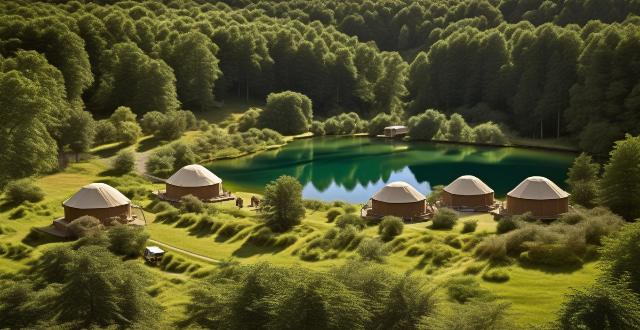Tourism can have negative impacts on the environment, including destruction of natural habitats, pollution, overuse of resources, cultural impacts, physical degradation, and contributing to climate change. It is important to manage tourism sustainably to minimize these effects and preserve the planet's natural beauty for future generations.

Negative Impacts of Tourism on the Environment
Tourism can have both positive and negative impacts on the environment. While it can contribute to economic development and cultural exchange, it can also lead to several adverse effects on the natural surroundings and local ecosystems. Here are some examples of the negative impacts of tourism on the environment:
Destruction of Natural Habitats
- Loss of Biodiversity: Tourism activities often result in the destruction of natural habitats, leading to a decline in biodiversity. This can occur through land clearing for infrastructure development or recreational activities that damage fragile ecosystems.
- Habitat Fragmentation: The construction of roads, hotels, and other tourist facilities can fragment habitats, making it difficult for wildlife to move freely and find food and mates.
Pollution
- Water Pollution: Tourist areas often struggle with waste management, leading to pollution of rivers, lakes, and oceans. Littering, improper disposal of sewage, and oil spills from boats can all contribute to water pollution.
- Air Pollution: Increased traffic and transportation associated with tourism can result in higher levels of air pollution, affecting both human health and the environment.
- Noise Pollution: Loud music, crowd noise, and engine sounds from various modes of transportation can disturb wildlife and reduce the overall enjoyment of natural areas for visitors seeking tranquility.
Overuse of Resources
- Overconsumption of Water: Tourist destinations may experience increased demand for water, leading to shortages and stress on local resources.
- Energy Consumption: Hotels and other accommodations often consume large amounts of energy for heating, cooling, lighting, and other services provided to guests.
Cultural Impacts
- Cultural Commodification: Tourism can lead to the commodification of local cultures, as traditions and customs are turned into commercial products for tourists' consumption.
- Loss of Authenticity: The influx of tourists can alter the character of local communities, diminishing their authenticity and uniqueness.
Physical Degradation
- Erosion and Soil Compaction: Heavy foot traffic in natural areas can cause soil compaction and erosion, damaging plant life and reducing the quality of the landscape.
- Trash and Litter: Improper disposal of trash by tourists can pollute scenic areas and harm wildlife that may mistake litter for food.
Climate Change
- Carbon Emissions: Travel to and within tourist destinations often involves flights, cars, boats, and other forms of transportation that produce carbon emissions contributing to climate change.
- Disruption of Ecosystems: Changes in temperature and weather patterns due to climate change can affect tourism destinations, altering ecosystems and potentially reducing their appeal to visitors.
In conclusion, while tourism offers numerous benefits, it is crucial to manage its growth sustainably to minimize its negative impacts on the environment. Implementing eco-friendly practices, promoting responsible tourism, and supporting conservation efforts are essential steps toward preserving our planet's natural beauty for future generations.